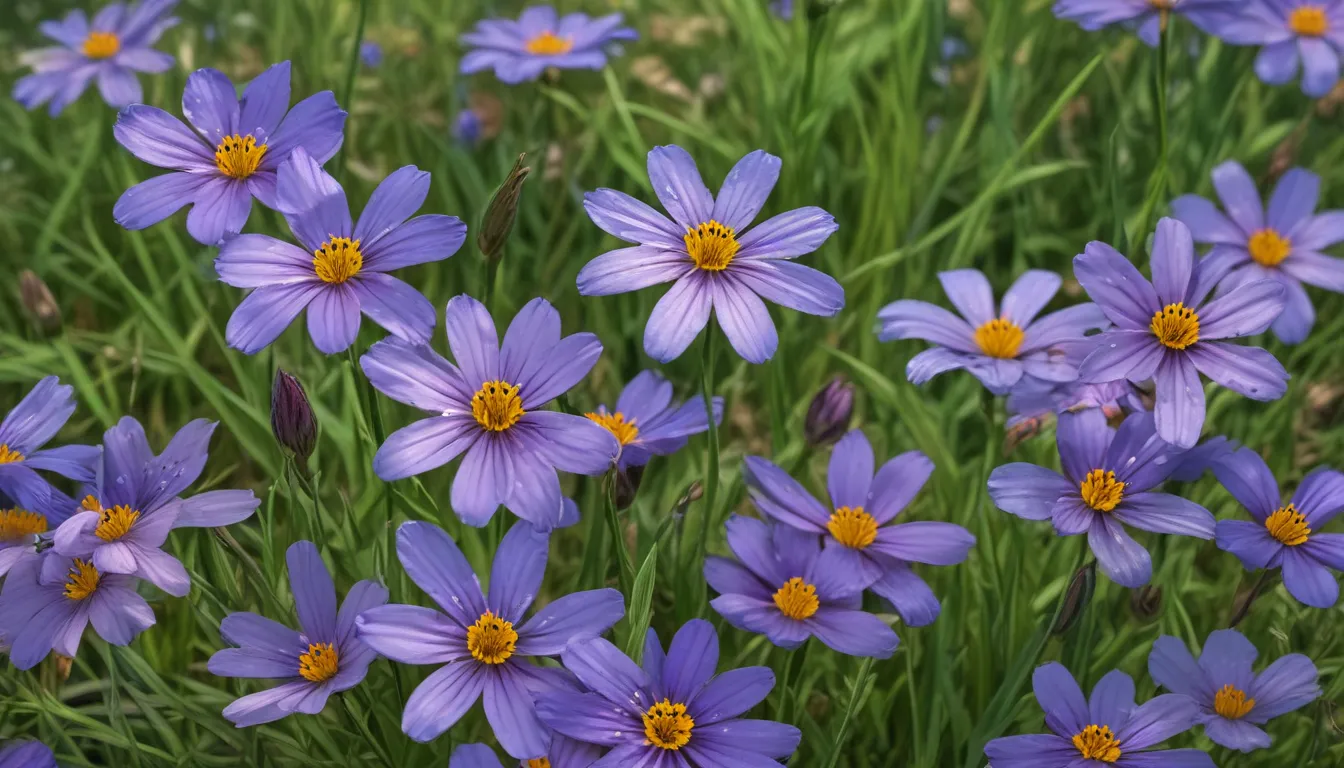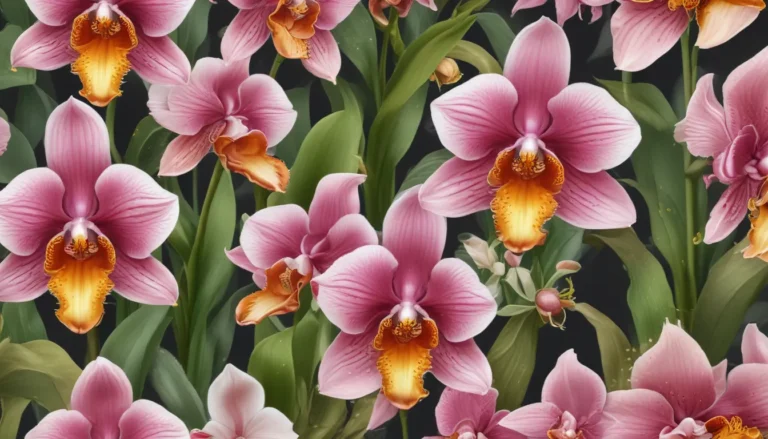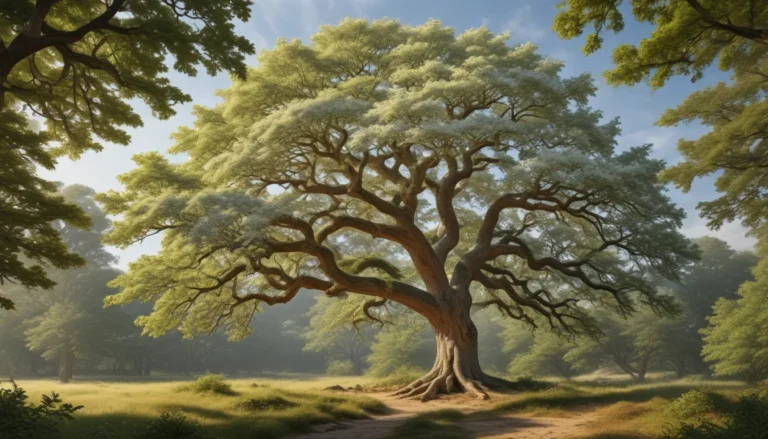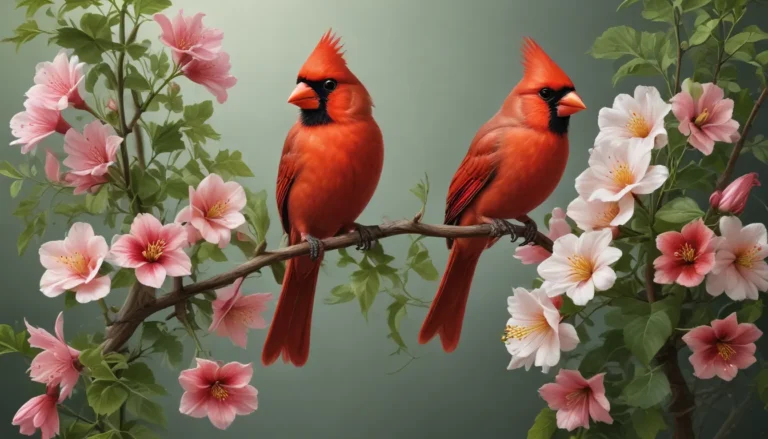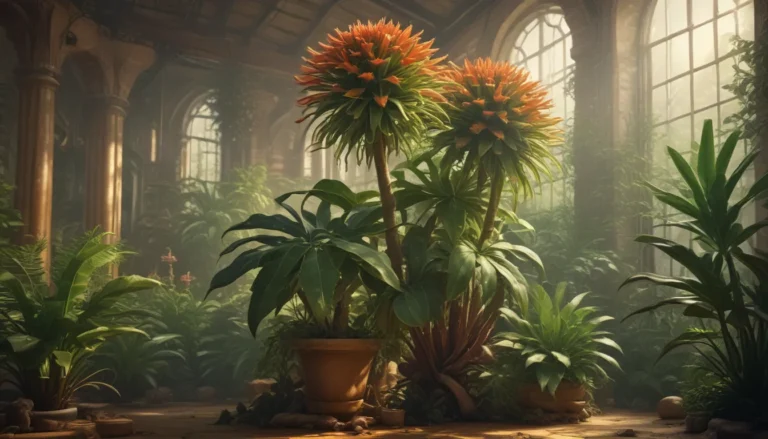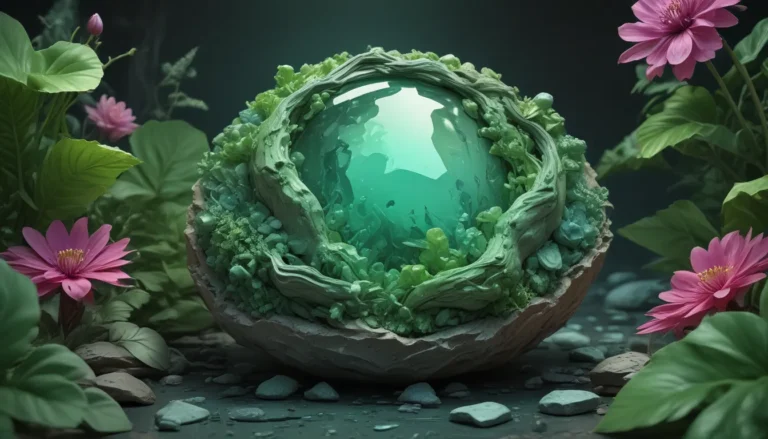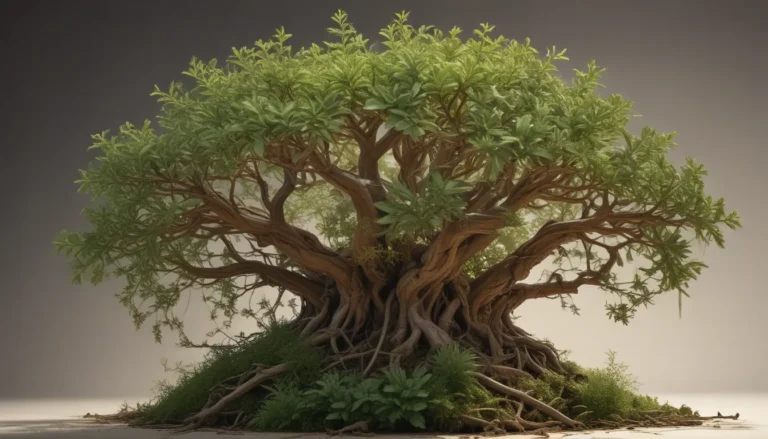The pictures we use in our articles might not show exactly what the words say. We choose these pictures to make you interested in reading more. The pictures work together with the words but don’t take their place. The words still tell you the important facts.
Have you ever been enchanted by the vibrant blue petals and striking yellow centers of Blue-Eyed Grass? This captivating wildflower, despite its misleading name, is not a grass at all but rather a stunning member of the iris family. Join us on a journey to explore the intriguing world of Blue-Eyed Grass as we uncover ten fascinating facts that will deepen your appreciation for this enchanting plant. From its ecological significance to its symbolism in cultural folklore, Blue-Eyed Grass holds many secrets waiting to be discovered. So, grab your gardening gloves and get ready to be captivated by the allure of this mesmerizing plant!
Unveiling the True Identity of Blue-Eyed Grass
Contrary to its name, Blue-Eyed Grass is not a grass but a member of the iris family. Belonging to the family Iridaceae, which includes beautiful flowering plants such as irises and crocuses, this charming plant is a true botanical gem.
The Intriguing Origins of Blue-Eyed Grass
The scientific name for Blue-Eyed Grass is Sisyrinchium, derived from the Greek words “sys” meaning “pig” and “rhynchos” meaning “nose.” This peculiar name refers to the pig-like snout shape of the seed capsule. With around 80 species of Blue-Eyed Grass found across the Americas, each one offers a unique glimpse into the diversity of this fascinating plant.
The Allure of Blue-Eyed Flowers
Blue-Eyed Grass earns its name from its stunning blue flowers with a striking yellow center. The delicate petals form a star-like shape that captures the attention of all who behold them. The vibrant blue hue and the bright yellow center add to the allure of this mesmerizing plant.
Exploring the Habitat of Blue-Eyed Grass
Native to North and South America, Blue-Eyed Grass can be found flourishing from Canada to Mexico and in countries like Brazil and Argentina. Thriving in various environments, this charming perennial plant adds natural beauty to landscapes across the Americas.
A Haven for Pollinators
One of the most remarkable qualities of Blue-Eyed Grass is its ability to attract pollinators. Butterflies, bees, and other important insects are drawn to the striking blue flowers, which serve as beacons for these vital pollinators. Through their visits, these insects play a crucial role in the plant’s reproduction.
Ideal Conditions for Blue-Eyed Grass
Blue-Eyed Grass thrives in sunny locations with well-drained soil. This perennial beauty prefers full sun exposure and is often found gracing meadows, open woodlands, and stream banks. Providing the right conditions will ensure this captivating plant flourishes in your outdoor space.
Blooming Beauty
In late spring to early summer, Blue-Eyed Grass bursts into a display of mesmerizing blue flowers. The vibrant blooms add a splash of color to their surroundings, creating a breathtaking sight that captivates all who witness it. This bloom time is a highlight of the Blue-Eyed Grass’s captivating allure.
The Graceful Foliage of Blue-Eyed Grass
The foliage of Blue-Eyed Grass consists of long, grass-like leaves that grow in elegant clumps. These slender leaves provide a beautiful backdrop to the vibrant flowers, enhancing the plant’s overall charm in its natural habitat.
Symbolism of Blue-Eyed Grass
In folklore and symbolism, Blue-Eyed Grass is associated with traits such as trust, loyalty, and everlasting love. Its enchanting blue flowers have been used to represent these qualities in various cultures, adding a layer of symbolism to its already captivating beauty.
The Versatility of Blue-Eyed Grass in Gardens
Blue-Eyed Grass’s eye-catching flowers and ornamental foliage make it a popular choice for gardens and landscaping. Whether used as a focal point or as part of a larger plant arrangement, this charming plant adds elegance and natural beauty to any outdoor space.
Conclusion: Beauty and Intrigue of Blue-Eyed Grass
Blue-Eyed Grass, with its delicate blooms and vibrant blue petals, offers beauty and intrigue in abundance. From its misleading name to its various applications in traditional medicine, this captivating plant remains a source of wonder for plant enthusiasts. Whether you have a penchant for native plants or simply appreciate the allure of wildflowers, Blue-Eyed Grass is sure to leave a lasting impression on all who encounter it.
FAQs: Unraveling Common Questions About Blue-Eyed Grass
-
Is blue-eyed grass actually a type of grass?
No, despite its name, blue-eyed grass is not a true grass. It belongs to the genus Sisyrinchium within the Iris family. -
Can blue-eyed grass grow in different climates?
Blue-eyed grass is found primarily in temperate regions, but certain varieties can adapt to different climates and grow in a wide range of conditions. -
How tall does blue-eyed grass typically grow?
Blue-eyed grass typically reaches a height of around 6 to 12 inches, making it a great choice for borders, rock gardens, or naturalized areas. -
Does blue-eyed grass require a lot of maintenance?
Blue-eyed grass is a relatively low-maintenance plant. It thrives in well-draining soil and requires occasional watering, but is generally resistant to pests and diseases. -
Can blue-eyed grass be propagated from seeds?
Yes, blue-eyed grass can be propagated from seeds, though it may take some time for the seeds to germinate and develop into mature plants. -
Are blue-eyed grass flowers fragrant?
Blue-eyed grass flowers do not have a strong fragrance, but their vibrant colors and delicate form make them a visually appealing addition to gardens. -
Can blue-eyed grass be grown in containers?
Yes, blue-eyed grass can be cultivated in containers. Ensure proper drainage in the pot and use a well-draining soil mix to prevent waterlogging. -
Are blue-eyed grass plants deer-resistant?
While generally considered deer-resistant, blue-eyed grass plants may still be prone to nibbling by hungry deer. Precautions may be necessary in areas with high deer populations. -
Can blue-eyed grass be used medicinally?
Certain Native American tribes used blue-eyed grass in traditional medicine for various ailments such as coughs, eye irritations, and digestive issues. -
Are there different varieties of blue-eyed grass?
Yes, there are several varieties of blue-eyed grass, each with unique characteristics and growing requirements. Common varieties include Sisyrinchium angustifolium, Sisyrinchium bellum, and Sisyrinchium Californicum.
Embark on a Journey of Discovery with Blue-Eyed Grass
Blue-Eyed Grass may seem like a simple plant at first glance, but its beauty and charm hold many surprises waiting to be explored. From its unique blooms to its ecological significance, this captivating plant offers a wealth of knowledge and wonder for nature enthusiasts. Dive deeper into the world of Blue-Eyed Grass and uncover the secrets that make it such a beloved addition to gardens and landscapes.
We are committed to providing you with engaging and trustworthy content that enriches your knowledge and appreciation of the natural world. Each fact we share is contributed by real users like you, ensuring a diverse range of insights and information. Our dedicated editors review each submission meticulously to maintain the highest standards of accuracy and reliability. Trust in our commitment to quality and authenticity as you continue your exploration and learning journey with us.
